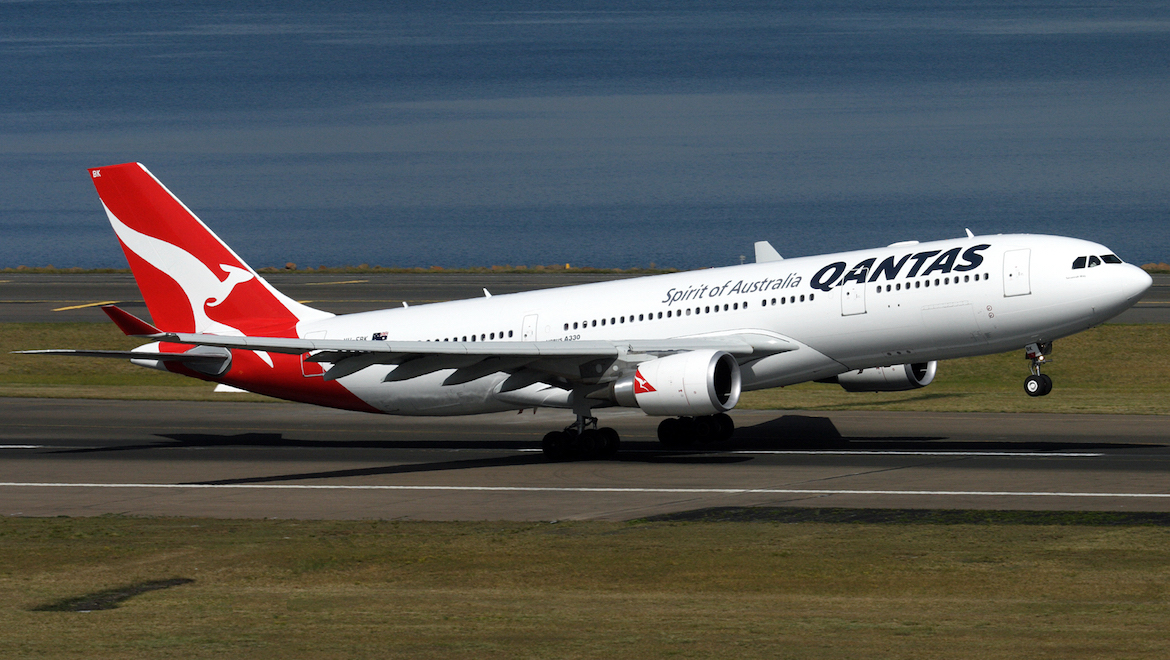
Qantas says weak demand and too much capacity from other carriers are behind its decision to end nonstop flights between Sydney and Beijing.
The Australian carrier will withdraw from the Sydney-Beijing route at the end of March 2020, leaving Shanghai as its sole destination in mainland China.
Passengers with tickets to travel on Qantas to Beijing on or after March 29 2020 will be given the option to travel to Hong Kong and connect to a Cathay Pacific/Cathay Dragon-operated flight to Beijing.
Alternatively, they can be rebooked on China Eastern-operated flights from Sydney to Beijing via Hangzhou or Nanjing, according to a note to travel agents published on the Qantas website.
Qantas international chief executive Tino La Spina said the decision to end nonstop flights to Beijing was in response to “what the market is telling us”.
“Our flights to Beijing have been underperforming for some time due to weaker demand as well as a big increase in capacity from other airlines,” La Spina said in a statement.
“We’ve got a strong partnership with China Eastern, so Qantas customers will be able to travel with them between Australia and Beijing and be rewarded as they would when flying with us.”
Qantas resumed Sydney-Beijing nonstop flights with Airbus A330-200 equipment in January 2017, ending an eight-year absence on the route.
At the time, the airline expressed the hope that a lower cost base, the growth in the China market and partnerships with local carriers would make the flights more successful than previous attempts to serve the Chinese capital. Further, Qantas stated in 2017 that Beijing was the 11th biggest route out of Sydney.

The current operation is Qantas’s third attempt to serve Beijing. It previously flew on the route between 1984 and 1987, and from 2006 to 2009.
The schedule for QF107/108 indicated the flights were aimed at Chinese visitors to Australia.
Flight QF107 operates as an afternoon departure from Sydney, with the late evening 2240 arrival time limiting the number of connections beyond Beijing.
Meanwhile, reciprocal QF108 is an overnight service from Beijing that lands in Sydney in the mid-afternoon, ensuring Chinese tourists visiting Australia were able to connect to other Australian destinations as well as to New Zealand.
In October 2018, Qantas reduced its schedule to Beijing from daily to five times a week.
Qantas said capacity between Beijing and Australia had increased by 20 per cent since its resumed flights to the Chinese capital in 2017 and further growth was expected in the period ahead.
This was despite international capacity into and out of Australia being flat.
Qantas said there was no change to its nonstop Sydney-Shanghai service, which La Spina said was performing well.
The withdrawal of Qantas from the route will leave Air China as the only airline with nonstop flights from Beijing to Sydney.
















Lechuga
says:This will be the struggle Australian airlines in the coming years, especially expanding into Asia. Asians want to fly Asian airlines, they want to fly their national airline. The best way to compete is to be the only one on the route, be the cheapest by a fair way (example Jetstar) or have a route with a lot of demand that you have strong codeshare ties with like Qantas and China Eastern do. I would say this is the same with Australians going on holiday too most of the time, but there’s less Australians wanting to go China than Chinese wanting to come to Australia.
Neil Hansford
says:Qantas are to be congratulated for drawing stumps on Beijing. Unlike Virgin, Qantas won’t stay on routes that are loss making with no future to save face and be politically sound. Chinese carriers are dumping capacity everywhere and if they were dumping sedans in Australia for $10,000 there would be outcry but they dump fares at will. The good thing is we get all these Chinese tourists into Australia on Chinese airlines and no Australian carrier has to lose money on the routes. Why should we fly to China at all? Whilstever Australian carriers have little access to the declining Chinese premium market why should we bother. There is a small fortune to be made in Australia they say but you have to have a large fortune to waste.
Phil
says:Honesty I don’t see why any carriers outside China should even bother flying to China when Chinese carriers have overfilled the market with their own capacity.
In terms of why Qantas dumped Beijing I reckon that considering the timing of the last flight the a330 will most likely be used for a 2nd daily Sydney to Haneda flight.
Red Cee
says:Will the plane to Beijing be redirected to Tokyo Haneda?
Peter Ritty
says:Am glad QF has the guts to withdraw from Beijing. Let the heavily subsidised Chinese carriers wear it.
Scott
says:Neil
Firstly there are all these negative views of Virgin for being allocated new slots like HND because in the past they have pulled out of international routes. Now apparently they should be chipped for not pulling out of routes earlier like Qantas – talk about double standards. This article shows in addition to ports like San Fransisco/Dubai Qantas also has history of route entry’s and exits, Qantas should be left alone to make its own commercial business decisions that suits THAT airline at THAT time, therefore the same logic must apply to Virgin and flow into context for future routes and slots.